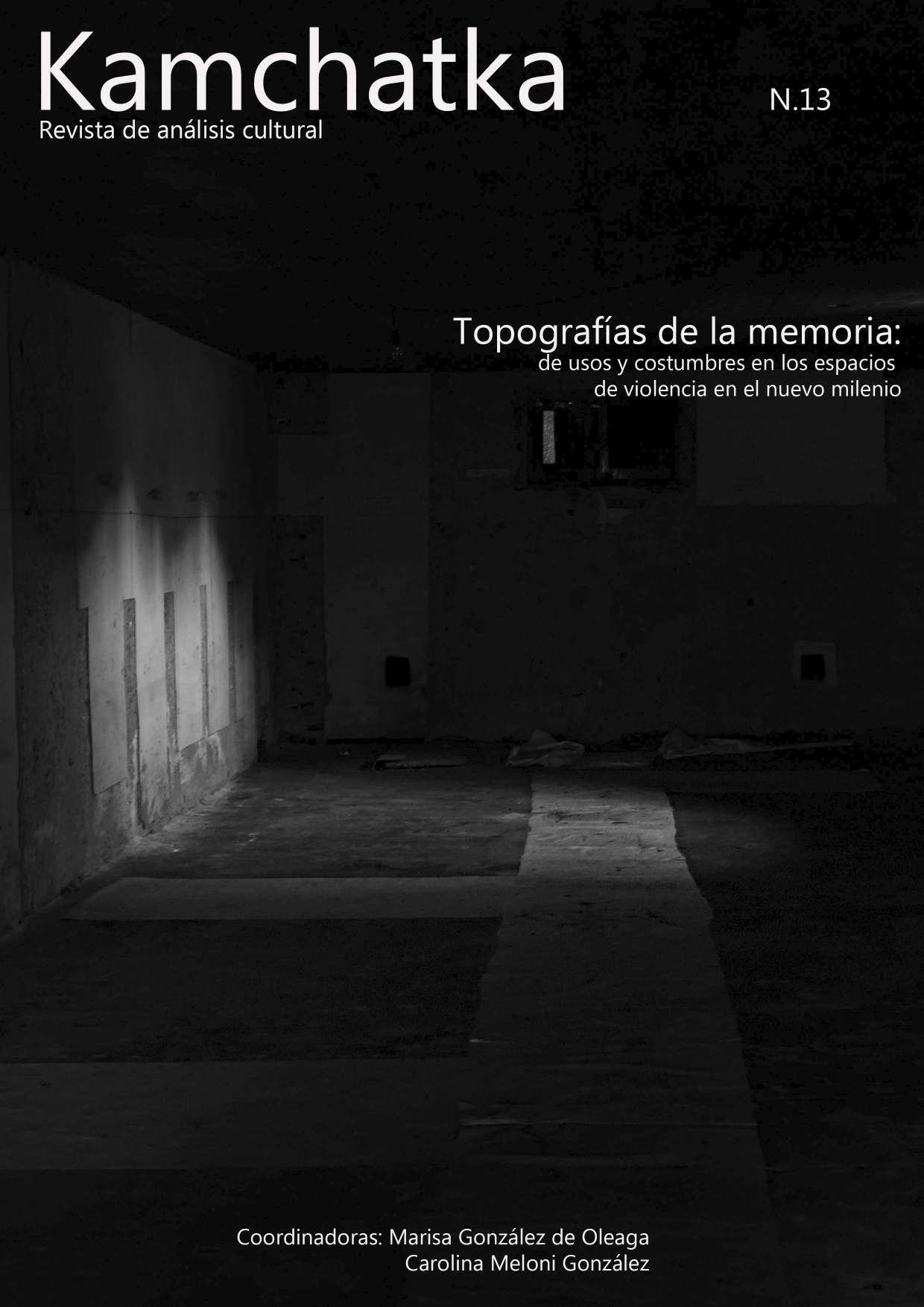(Un)Dwell: The Spatial Inscription of the Forced Disappearance in the House
DOI:
https://doi.org/10.7203/KAM.13.12985Keywords:
Space, Kidnapping, Disappearance, Argentina, military dictatorship Abstract
Abstract
Despite that the forced disappearance of people is often associated with strange, distant and even unimaginable spaces, in Argentina -during the military dictatorship (1976-1983)- the kidnappings happened most of the time in the same houses where the disappeared lived. In this article, I will explore how the spatio-temporal dynamics of the house were reconfigured after the kidnapping. The article addresses, in the first part, the different traces leaved in the house after the kidnapping took place. In the second part, I propose the concept of (un)dwell in order to explore the ways in which the occupation of the house was deeply reconfigured. In the third part, I analyze the impact in the temporality of the house. Finally, I examine why, even before the kidnapping, the houses were already out of the “expected” order, hosting “heterogeneous” families, “disguised” spaces and forbidden objects.
 Downloads
Downloads
 References
References
Alcoba, Laura (2008). La casa de los conejos. Buenos Aires: Edhasa.
Adam, Barbara (1995). Timewatch. The Social Analysis of Time. Cornwall: Polity Press.
Bachelard, Gaston (2012). La poética del espacio. México: Fondo de Cultura Económica.
Benjamin, Walter (1991). Gesammelte Schriften. Alemania: Suhrkamp.
Calveiro, Pilar (2001). Poder y desaparición. Los campos de concentración en Argentina. Buenos Aires: Colihue.
Carnovale, Vera. “Lazos de sangre. Afectividad y totalidad en el Partido Revolucionario de los Trabajadores-Ejército Revolucionario del Pueblo (PRT-ERP)”. Revista digital de la Escuela de Historia 4 (2012).
Colombo, Pamela. “Espacio y desaparición: los campos de concentración en Argentina”. Isegoria 45 (2011): 639-652
Colombo, Pamela (2017). Espacios de desaparición. Vivir e imaginar los lugares de la violencia estatal (Tucumán, 1975-1983). Buenos Aires: Miño y Dávila.
Da Silva Catela, Ludmila (2002). No habrá flores en la tumba del pasado. La experiencia de reconstrucción del mundo de los familiares de desaparecidos. Buenos Aires: Ediciones Al Margen.
Feierstein, Daniel (2007) El genocidio como práctica social. Entre el nazismo y la experiencia argentina. Buenos Aires: Fondo de Cultura Económica.
Feldman, Allen (1991). Formation of Violence: The Narrative of the Body and Political Terror in Northern Ireland. Chicago: The University of Chicago Press.
Freud, Sigmund (2003). The Uncanny. London: Penguin Books.
Gatti, Gabriel (2011). Identidades desaparecidas. Peleas por el sentido de los mundos de la desaparición forzada. Buenos Aires: Prometeo Libros.
Hamber, Brandon, Wilson, Richard. “Symbolic closure through memory, reparation and revenge in post-conflict societies”. Journal of Human Rights 1(2002): 35-53.
Harrison, Paul. “The space between us: opening remarks on the concept of dwelling”. Environment and Planning D: Society and Space 25 (2007): 625-647.
Harvey, David (1996). Justice, Nature & the Geography of Difference. Cambridge: Blackwell Publishers.
Hockey, Jenny, Penhale, Bridget y Sibley, Davi¡d (2007). “Environments of Memory: Home Space, Later Life and Grief”. Davidson, Joyce, Bondi, Liz, Smith, Mick (Eds.). Emotional Geographies. Cornwall: Ashgate: 135-146.
Lefebvre, Henri (1991). The Production of Space (D. Nicholson-Smith, Trans.). Malasia: Blackwell Publishing.
Maneiro, María (2005). Como el árbol talado. Memorias del genocidio en La Plata, Be- risso y Ensenada. Buenos Aires: Ediciones Al Margen.
May, Jeff. “Zombie geographies and the undead city”. Social & Cultural Geography 11 (2010): 285-298.
Navaro-Yashin, Yael (2012). The Make-Believe Space. Affective Geography in a Postwar Polity. Durham and London: Duke University Press.
Trigg, Dylan (2012). The Memory of Place. A Phenomenology of the Uncanny. Ohio: Ohio University Press.
Zerubavel, Eviatar (2003). Collective Memory and the Social Shape of the Past. Time Maps. Chicago: The University of Chicago Press.
Downloads
Published
How to Cite
-
Abstract1160
-
Artículo (Español)850
Issue
Section
License
This journal provides an immediate free access to the content on the principle that freely make investigation available to the public, which promotes an increased global knowledge exchange.
Unless otherwise indicated, texts published in this journal are under the license Attribution-NonComercial 4.0 by Creative Commons. These texts may be copied, distributed and publicly communicated whenever the publication’s author and title are quoted and whenever they are not used for commercial purposes. In any case, intellectual property of the articles and its potential economic rights entirely belong to its authors.
The full license can be consulted on https://creativecommons.org/licenses/by-nc/4.0/. We encourage authors to disseminate papers published in Kamchatka. Journal of cultural analysis electronically, in institutional digital repository or in their websites.





